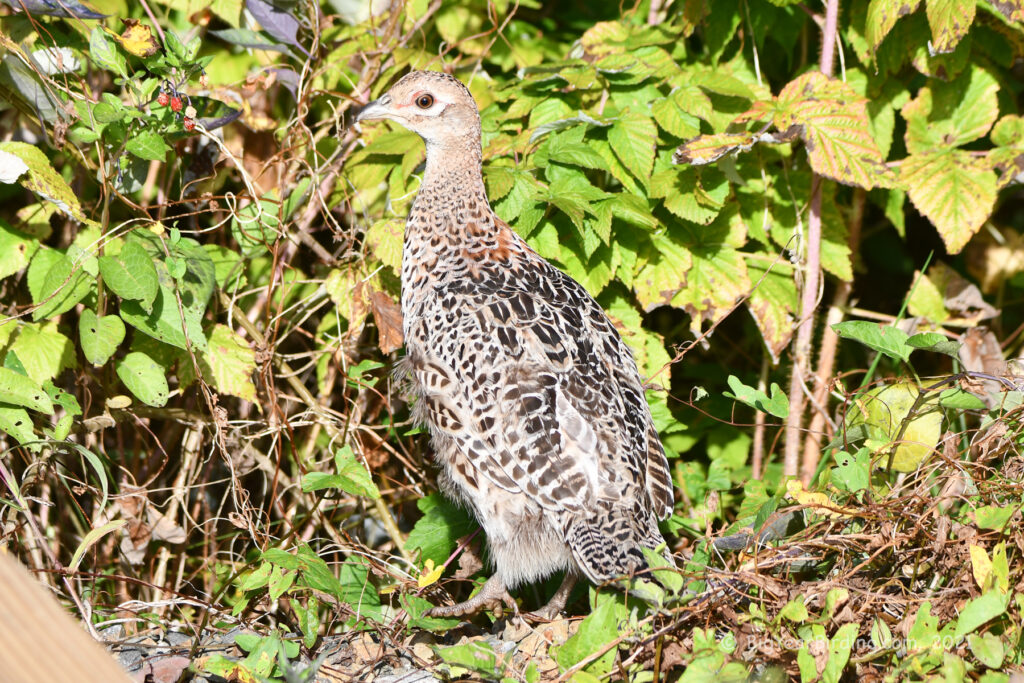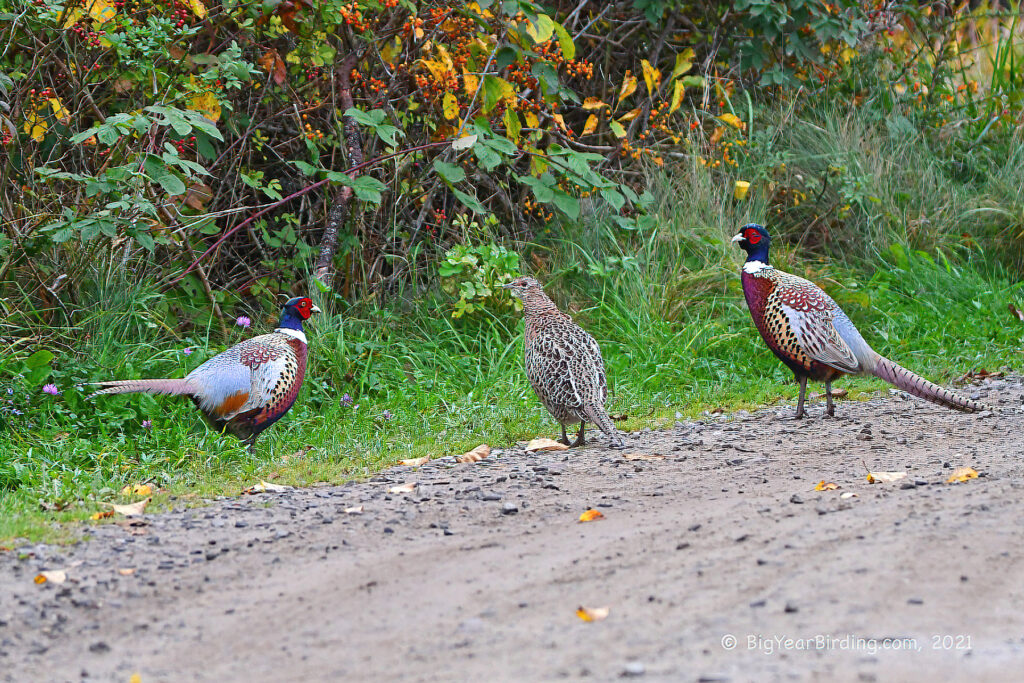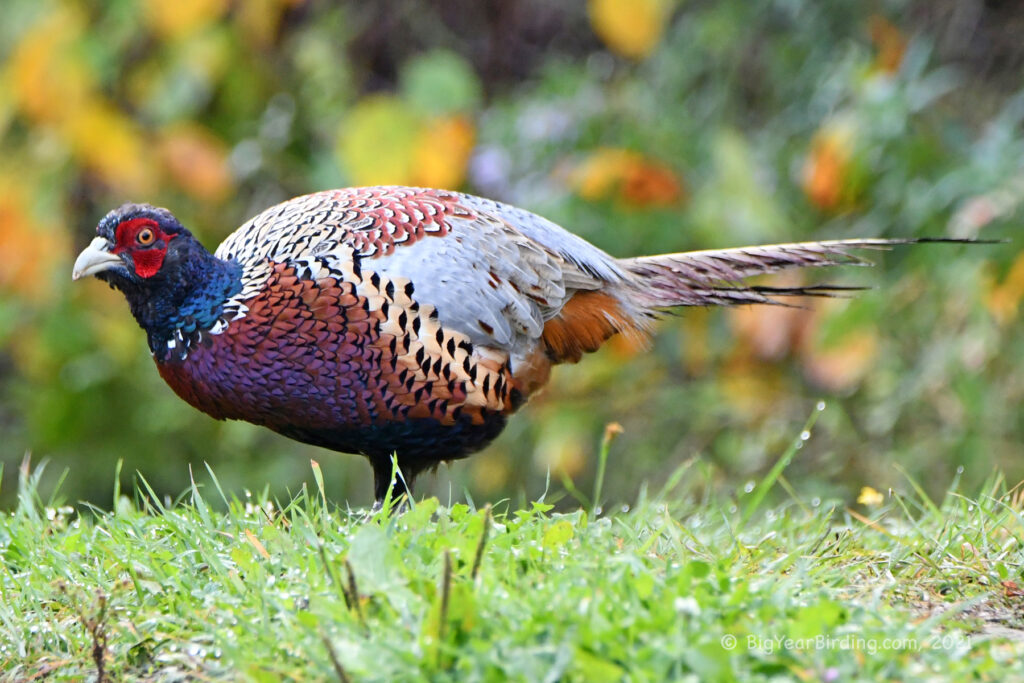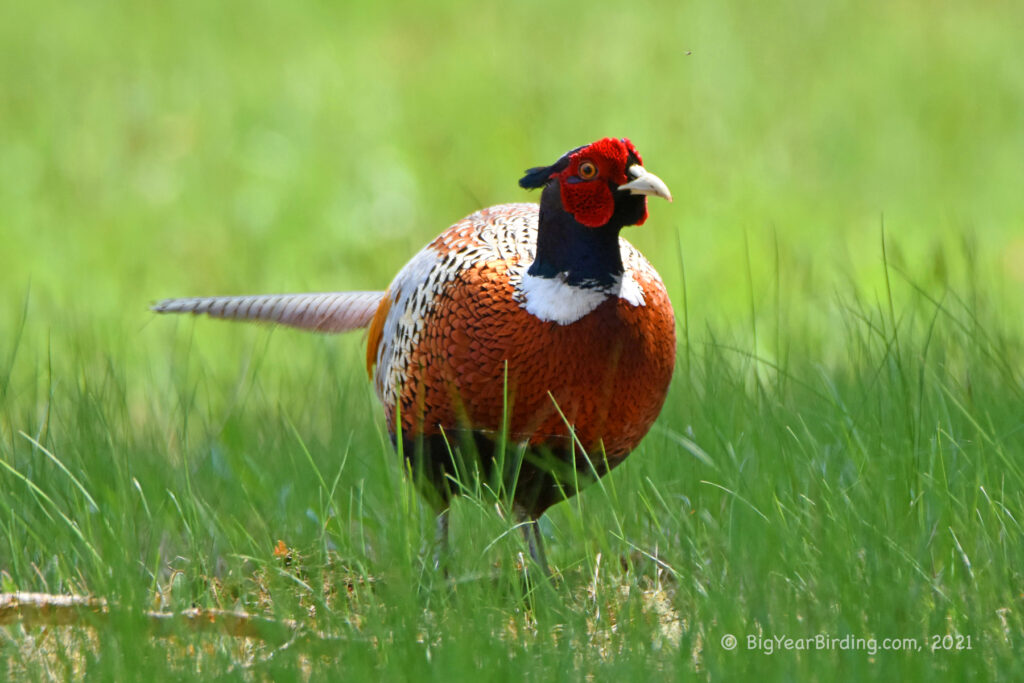The Ring-necked Pheasant, also known as the common pheasant, is a popular game bird native to Asia but has been introduced to many other parts of the world, including North America, Europe, and Africa. Adult males can reach a length of up to 36 inches, including their long tail feathers, while females are slightly smaller, measuring up to 24 inches in length. They typically weigh between 2-3 pounds.

One of the most distinctive features of the male Ring-necked Pheasant is its bright, iridescent green head and neck, which is ringed with a white band. They have a brown body with black and white markings, and their long, pointed tail feathers are reddish-brown with black bars. Females, on the other hand, have more muted coloring, with brown and tan feathers that provide excellent camouflage for nesting.
Ring-necked Pheasants are non-migratory birds, and their populations can be found year-round in suitable habitats. They prefer to live in open grasslands, agricultural fields, and wooded areas near streams or wetlands, where they can find food and cover. They are also known to adapt well to human-altered landscapes, including parks, gardens, and even urban areas.
During the breeding season, male Ring-necked Pheasants can be heard making a distinct “crowing” call to attract females. The male will display his colorful plumage and perform a courtship dance, which includes puffing up his chest and fanning out his tail feathers. After mating, the female will lay a clutch of eggs in a nest on the ground, which she will incubate for around 25 days before the chicks hatch.

Due to their popularity as a game bird, Ring-necked Pheasants have been widely introduced to different parts of the world. They are frequently hunted for sport in the fall and winter months, and in some areas, they are raised on farms for commercial sale. However, they are also valued for their beauty and can be enjoyed by birdwatchers and nature enthusiasts in their natural habitats.


